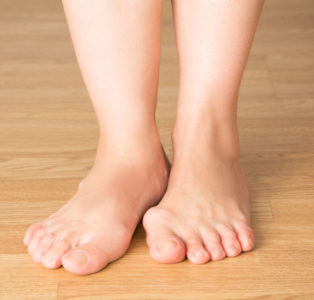 Have you noticed that you’re starting to develop a bump or protrusion on the side of your foot near your big toe joint? Are you wondering what that is, and more importantly, if you need to do anything about it? This is a condition we see all the time in our clinic, and treatment varies depending on a number of factors. In today’s blog, we take a closer look at bumps on the side of your toe, and how the condition is normally treated.
Have you noticed that you’re starting to develop a bump or protrusion on the side of your foot near your big toe joint? Are you wondering what that is, and more importantly, if you need to do anything about it? This is a condition we see all the time in our clinic, and treatment varies depending on a number of factors. In today’s blog, we take a closer look at bumps on the side of your toe, and how the condition is normally treated.
Bump On The Side Of My Toe
A bony formation or growth on the side of your foot near the base of your big toe joint is called a bunion. They develop when pressure on the area causes some of the bones that stabilize the joint to shift and move out of place. This results in the top of your big toe getting pulled towards your other toes, meaning the base of the toe joint shifts outward and causes this bump you’re seeing. Most commonly, tight or poor fitting shoes are the underlying cause of this lateral pressure that leads to bunion onset.
Caring for a bunion depends on a number of factors, including the size of the bunion, whether it’s causing symptoms and the effects different treatments would have on the bunion. That’s why it’s so important to talk to your primary care physician, or better yet, a foot specialist, if you notice that a bunion is beginning to form. Bunions respond well to conservative care, but only if they are caught early, so don’t just ignore the problem or hope that it will go away on its own.
During your consultation with a foot specialist, they’ll conduct a physical exam of the foot and ask about your symptoms. They’ll also likely order an X-ray, as this will allow the doctor to see how the joint has shifted and how stable the area is. Once they understand how the joint has shifted, they’ll walk you through treatment options.
For small or asymptomatic bunions, conservative care can usually prevent the bunion from getting worse and keep symptoms at bay. The biggest thing you can do at this point is evaluate all your footwear choices and ensure that you’re not wearing tight footwear. Switching to a wider toe box will help keep pressure off your big toe joint. Over the counter pain medications and physical therapy/stretching exercises can also be helpful for early stage bunion control.
For many patients, conservative care does the trick. However, if you have a more severe bunion or it’s causing pain that doesn’t resolve with conservative care, more hands-on care will be required. In many cases, this involves a minimally invasive procedure to realign and stabilize the big toe joint. Dr. Silverman has performed this procedure hundreds of times, and he even created a little video to help explain the procedure.
So if you’ve noticed a bump forming on the side of your foot, have it looked examined by a specialist and take some simple steps to help prevent the bunion from turning into a problem that requires surgery.